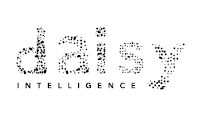
What Insurers Are Thinking In 2021
 Daisy Intelligence
Daisy Intelligence
In 2021 we find ourselves in a recession caused by the global COVID-19 pandemic. In past recessions, specifically in 2008-2009, insurers and other financial institutions experienced an increase in fraudulent activity. Individuals who have lost their jobs or experienced a decline in income may commit fraud to make ends meet. Criminal actors also take advantage of recessions and the economic anxiety of many people to commit a variety of fraud schemes. We expect the current pandemic to be no different. Insurers are seeking ways to improve their fraud detection and avoidance capabilities to combat this expected rise in fraudulent activity. This will be a focus area for insurers in 2021.
Claims automation and the digitization of the industry has been a priority for over a decade and many insurers have significant initiatives in progress. The pandemic has created a change in claims behaviour. More people working from home, temporary shutdown of certain health services like massage, physiotherapy, chiropractic etc. early in the pandemic, cancellation of vacation and business travel and general lifestyle changes affect the nature and volume of claims submitted. Many insurers have also changed how they process certain types of claims. Furthermore, claims patterns continue to evolve as everyone comes to understand the impact of the pandemic on their lives. We also see lockdowns being relaxed in some areas and increased in others as the pandemic surges in a second wave in many geographies. Therefore, claims automation technologies built on pre-COVID claims patterns, need to be re-evaluated and this will also be a priority for insurers in 2021 and beyond.
Much of the fraud detection efforts are being conducted by the special investigations units (SIU) in insurance companies. Human intervention is typically required in the vast majority of suspected fraudulent claims. There exists a significant volume of low dollar value claims in most insurance companies that are not feasible to be reviewed by limited SIU resources. Combining claims automation and fraud systems to automatically address these types of claims is a significant untapped opportunity, that we see some insurers seeking to address.
Claims process labour is also stretched in reviewing documents associated with claims. Simply reviewing documents to match names and addresses is a very time-consuming activity considering that many claim types have 5-10 or more documents requiring review. Insurers with hundreds of thousands of annual claims will have over a million documents requiring this simple validation check. For fraud investigations, a more thorough document review taking tens of minutes per document would be required for the 1% to 3% of claims that are suspicious. Most insurance companies spend tens to hundreds of thousands of labor hours per year reviewing documents or in the worst case only reviewing a sample. Automatic document verification is also a need in 2021 as the industry moves to speed up claims processing to meet customer expectations.
In response to changes driven by the pandemic, we believe that the pace of digitization in the insurance industry will increase in 2021 with a focus on AI driven automation technologies that improve fraud detection capabilities, respond dynamically to changes in claim patterns still permitting straight through processing and execute automated document verification. Exciting times for the industry!
If this blog is of interest, feel free to reach out to schedule a virtual coffee chat to discuss further.




